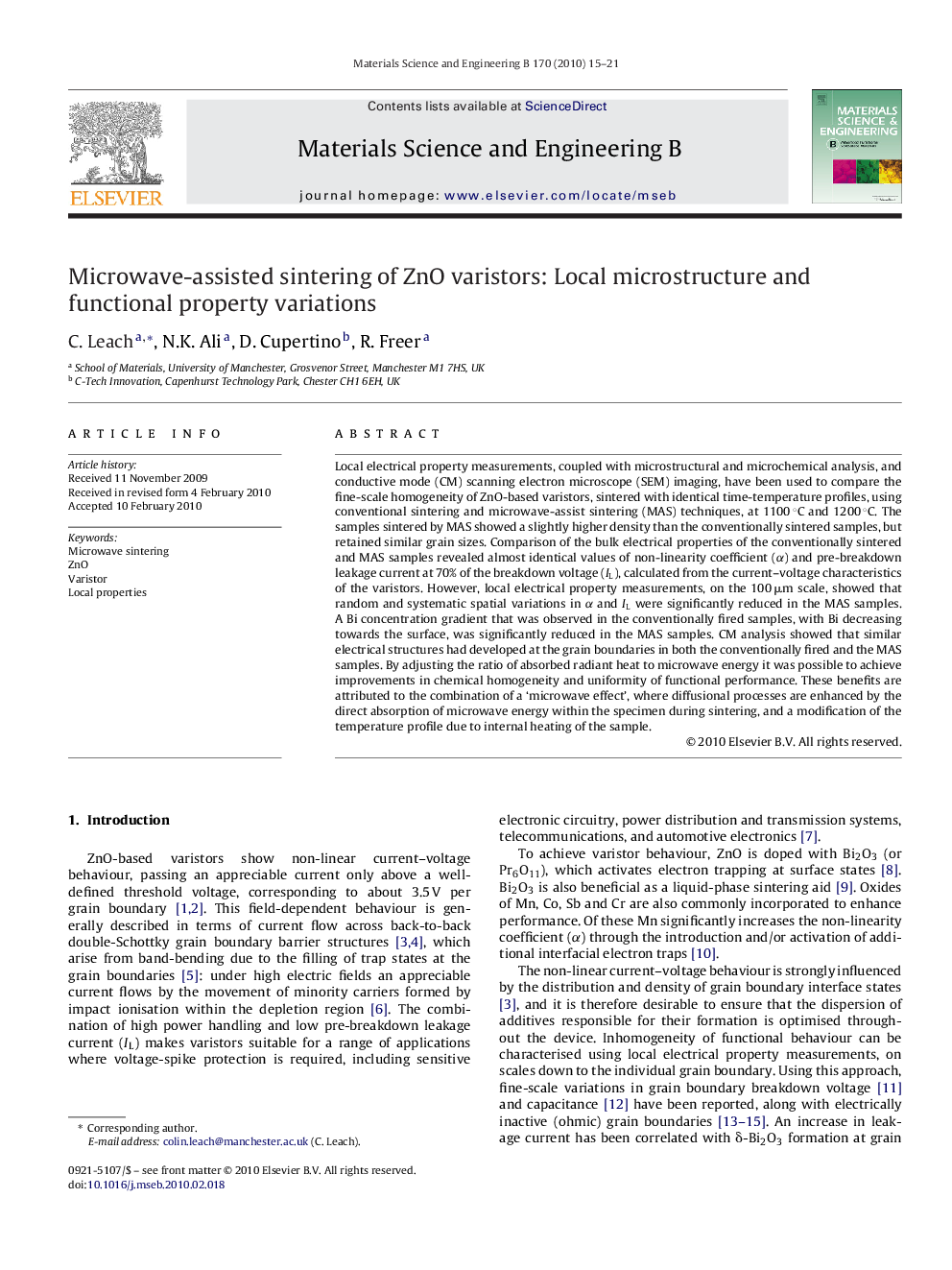| Article ID | Journal | Published Year | Pages | File Type |
|---|---|---|---|---|
| 1529732 | Materials Science and Engineering: B | 2010 | 7 Pages |
Local electrical property measurements, coupled with microstructural and microchemical analysis, and conductive mode (CM) scanning electron microscope (SEM) imaging, have been used to compare the fine-scale homogeneity of ZnO-based varistors, sintered with identical time-temperature profiles, using conventional sintering and microwave-assist sintering (MAS) techniques, at 1100 °C and 1200 °C. The samples sintered by MAS showed a slightly higher density than the conventionally sintered samples, but retained similar grain sizes. Comparison of the bulk electrical properties of the conventionally sintered and MAS samples revealed almost identical values of non-linearity coefficient (α) and pre-breakdown leakage current at 70% of the breakdown voltage (IL), calculated from the current–voltage characteristics of the varistors. However, local electrical property measurements, on the 100 μm scale, showed that random and systematic spatial variations in α and IL were significantly reduced in the MAS samples. A Bi concentration gradient that was observed in the conventionally fired samples, with Bi decreasing towards the surface, was significantly reduced in the MAS samples. CM analysis showed that similar electrical structures had developed at the grain boundaries in both the conventionally fired and the MAS samples. By adjusting the ratio of absorbed radiant heat to microwave energy it was possible to achieve improvements in chemical homogeneity and uniformity of functional performance. These benefits are attributed to the combination of a ‘microwave effect’, where diffusional processes are enhanced by the direct absorption of microwave energy within the specimen during sintering, and a modification of the temperature profile due to internal heating of the sample.
